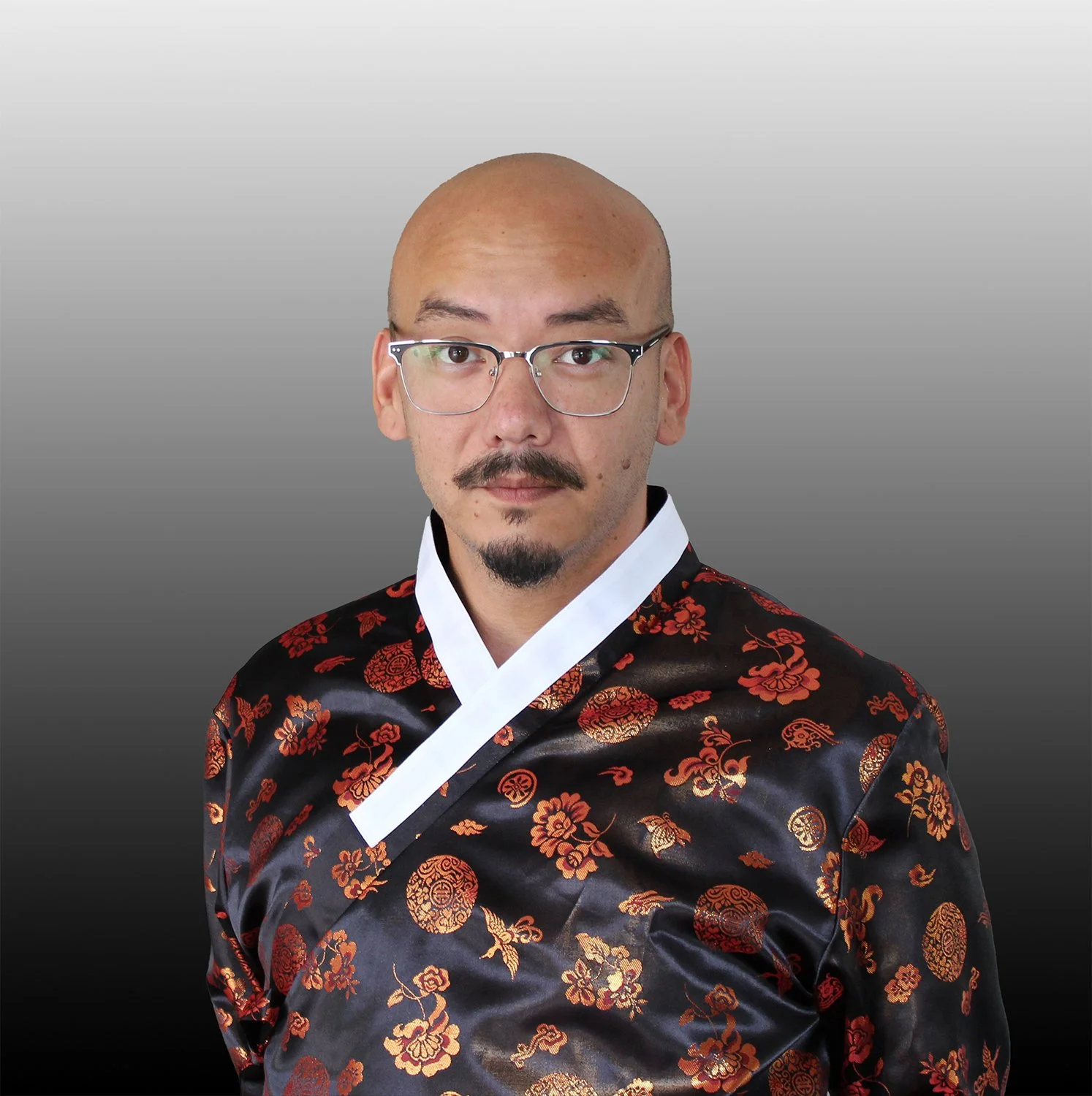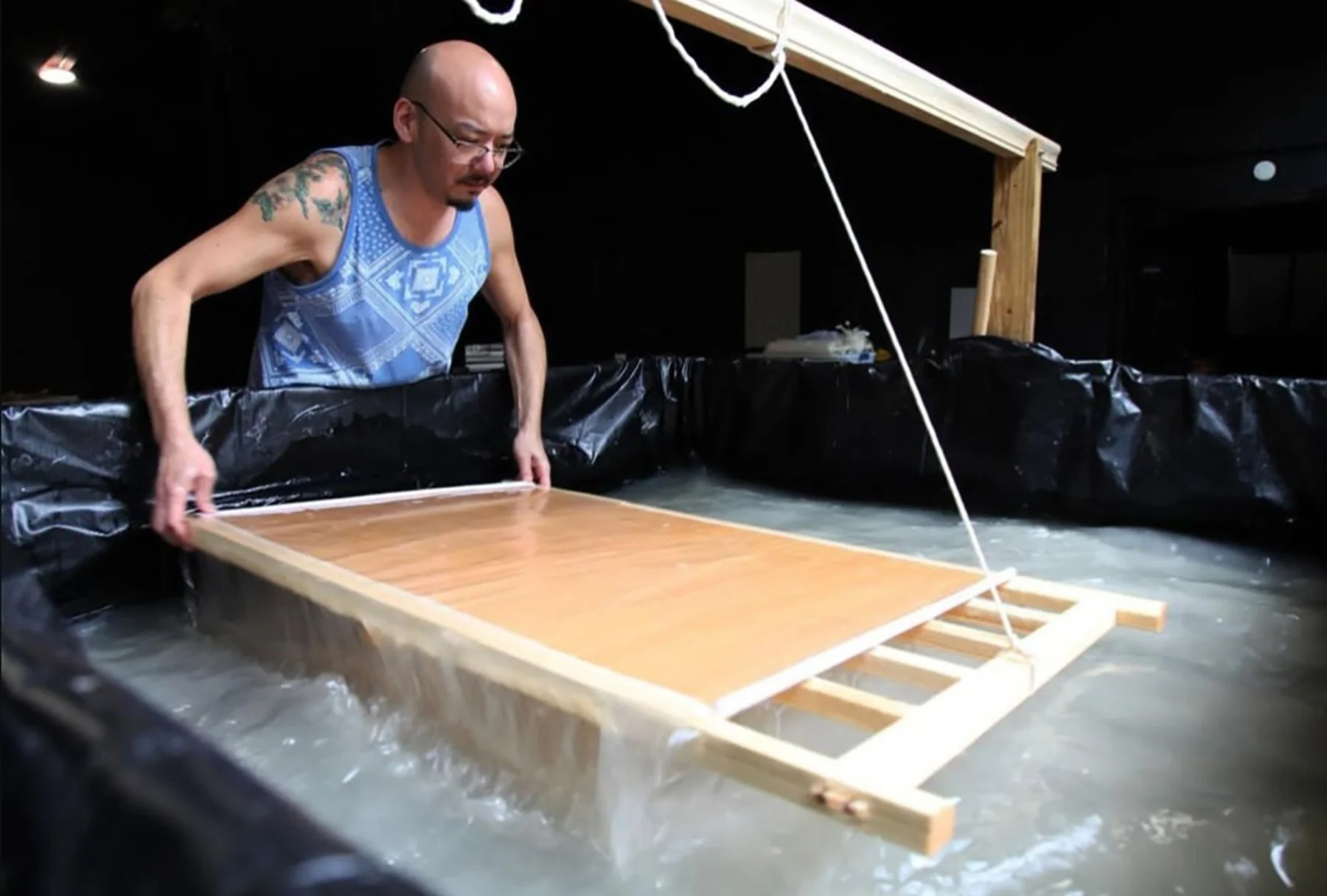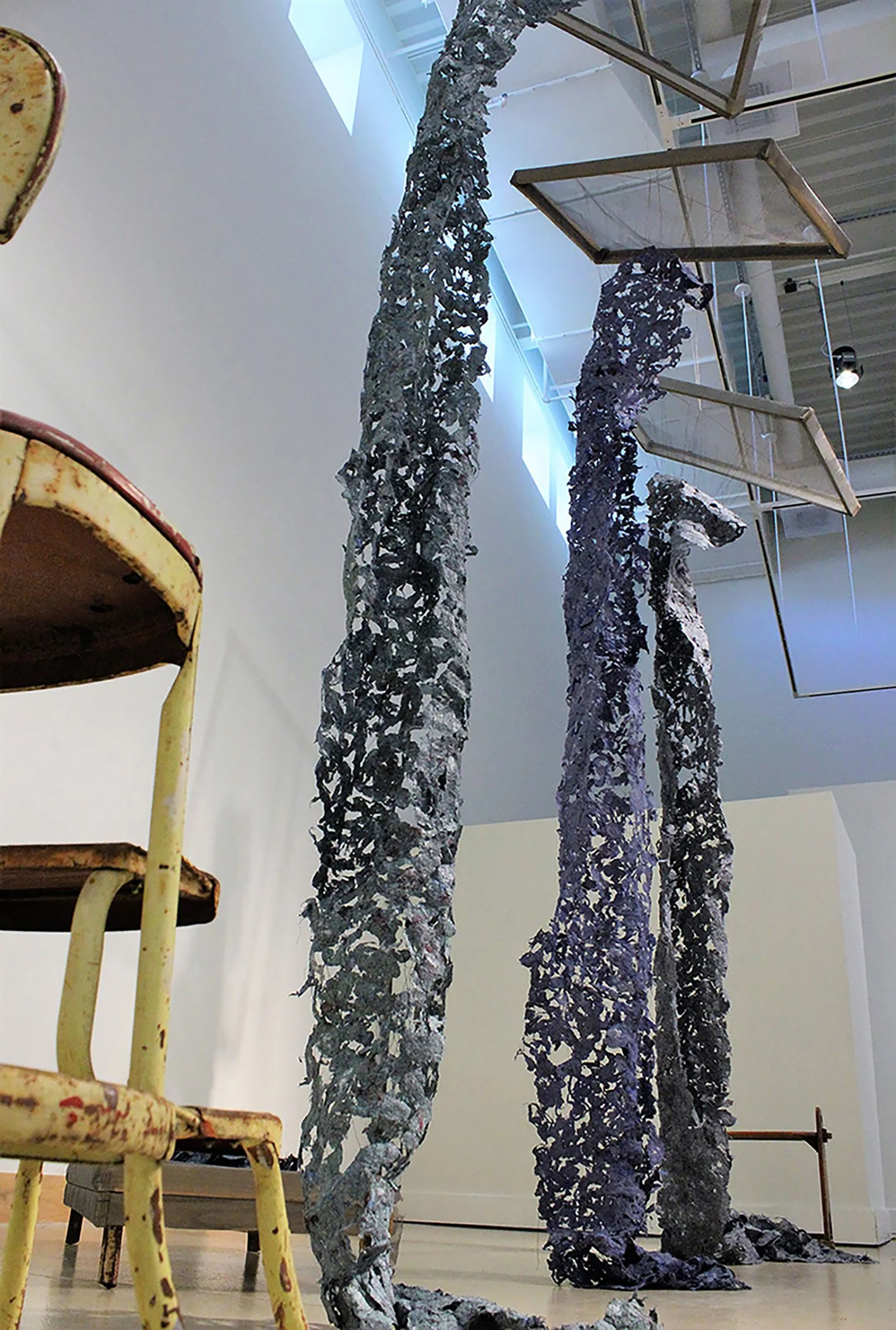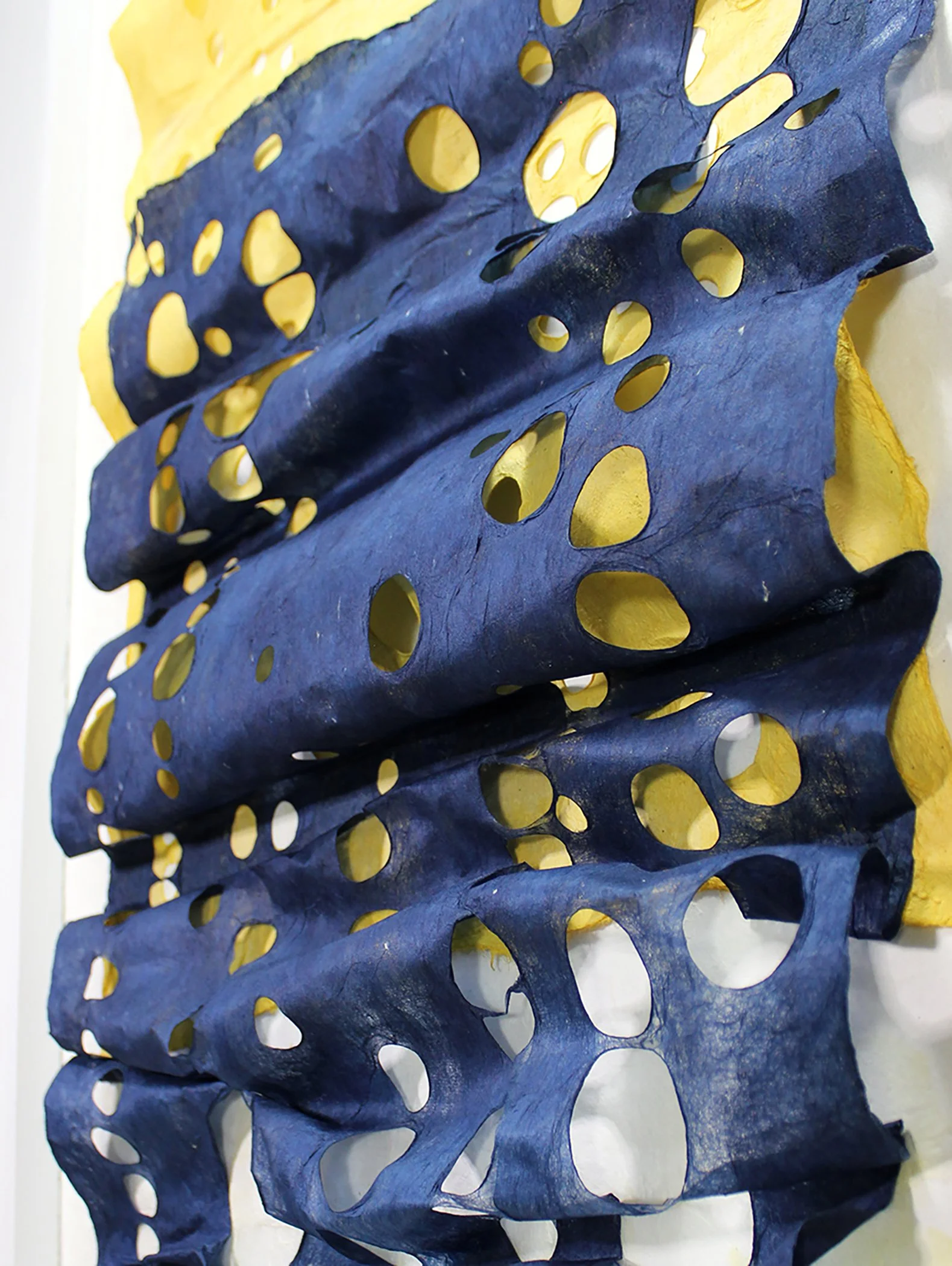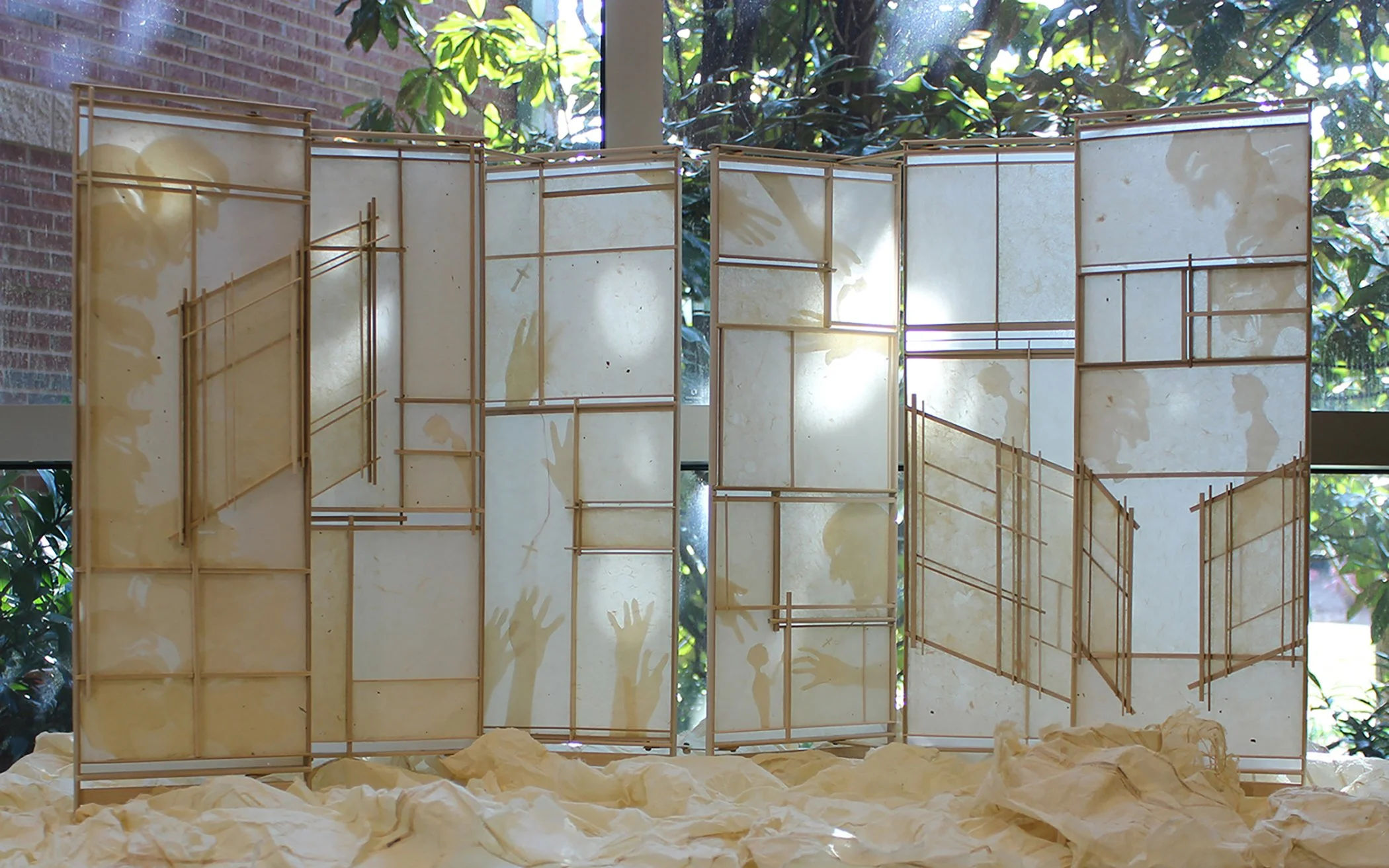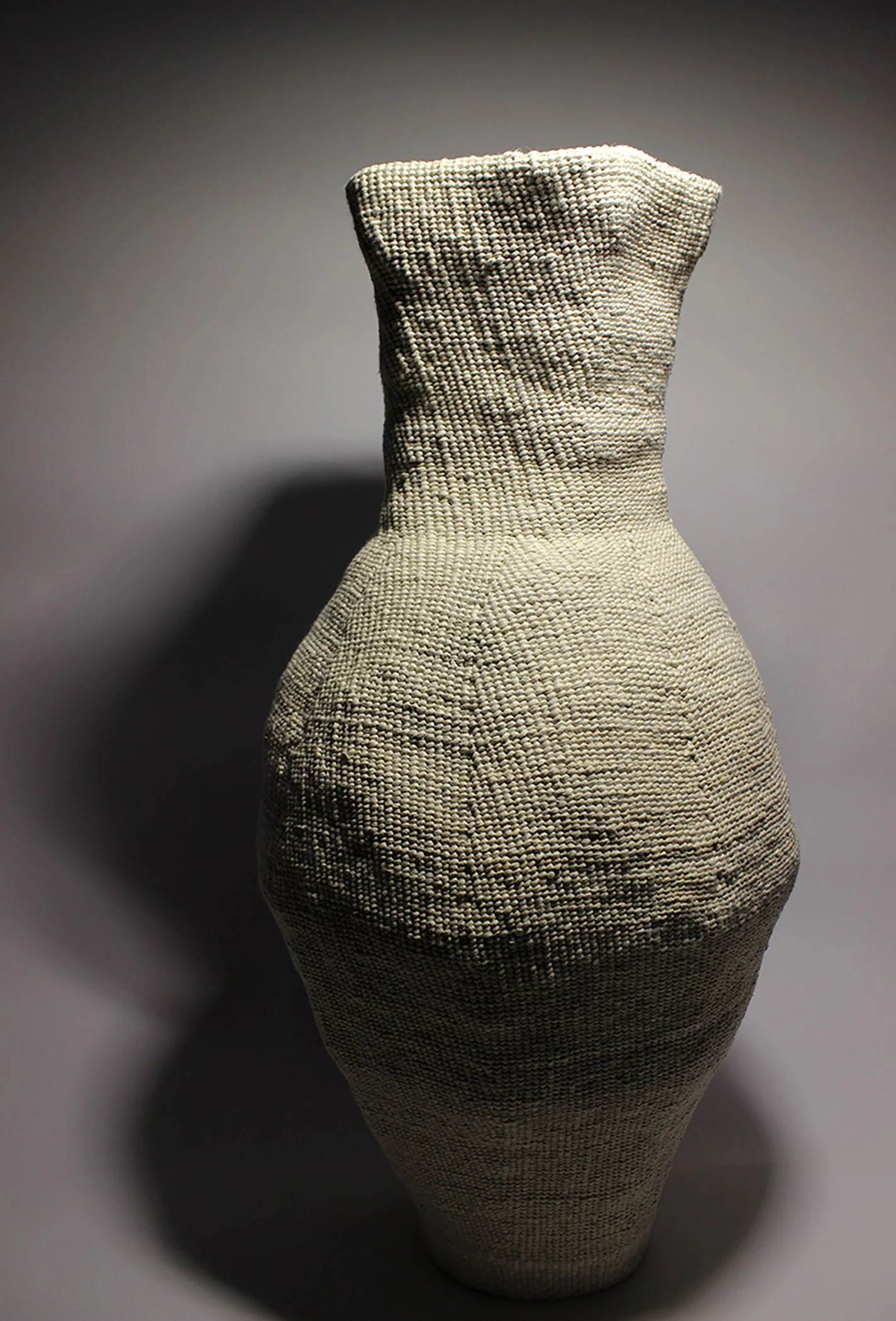Robert Choe Henderson
2026 Brightwork Fellow
BIO
Robert Choe Henderson (Clay County NC) is a gay Korean American visual artist and craft scholar whose practice spans papermaking, installation, and book arts. His work explores survival, memory, and cultural inheritance, transforming handmade paper into environments that confront histories of rupture while embodying endurance and repair. He is one of a very small number of U.S. practitioners of webal ddeugi, the indigenous Korean papermaking technique of sheet formation, and he brings endangered traditions into contemporary contexts while expanding the role of paper in visual art.
Born and raised in a working-class neighborhood of Orlando, Florida, Robert experienced firsthand the intersections of poverty, racism, queerness, and cultural displacement. These living conditions, alongside tumultuous family and cultural dynamics, continue to shape the urgency of his work. He now comes to Anchorlight from Clay County in western North Carolina, where he has lived for more than a decade. His installations and artist books have been exhibited nationally and internationally, and he serves as a cultural bearer of hanji traditions in both scholarly and community contexts, teaching workshops, giving lectures, and mentoring artists across the U.S.
Recent and forthcoming fellowships and residencies include the Brightwork Fellowship at Anchorlight in Raleigh, the Pullman Yards Residency in Atlanta, the Morgan Conservatory in Cleveland, Penland School of Craft, and academic institutions. He is a 2025 Center for Craft Archive Fellow, a Southern Highlands Craft Guild Emerging Artist, and the recipient of the Sara Clugage Award for critical craft writing. His forthcoming research essay with Hyperallergic (2026) will expand his contributions to public scholarship, bridging the studio and the archive. Roberts’s practice is defined by the integration of scholarship and making, advancing decolonial frameworks for East Asian papermaking in the United States while producing installations that situate paper as body, memory, and architecture.
Robert earned his BFA in Studio Arts from Western Carolina University, and an MFA in Book Arts from the University of Iowa Center for the Book where he trained under leading figures in conservation, bookbinding, letterpress printing, and papermaking. His training spans both Western and Eastern approaches, grounding him in multiple lineages while charting a distinct and ambitious trajectory of his own.
ARTIST STATEMENT
My practice begins with paper as body, memory, and architecture. Hanji, Korea’s handmade paper, is the foundation, yet my training extends across global papermaking traditions. I am one of the few U.S. practitioners of webal ddeugi, the indigenous Korean method of sheet formation, where the body functions as an instrument of rhythm, endurance, and balance during labor-intensive ritual. Alongside this specialization, I’ve built a vocabulary that moves fluidly across Eastern and Western papermaking practices while honoring the integrity of each. This grounding, rigorous craft and conceptual vision, defines me as both artist and scholar.
Paper in my practice is not a surface to hold image; it is the protagonist. Fibers beaten, dispersed, and pulled into sheets embody histories of rupture and repair. Seams become records of persistence, whether stitched into flowing scrolls, textured through joomchi, or twisted into vessels by jiseung. These processes transform delicacy into strength and intimacy into scale. Air currents choreograph with chattering hanji, light cuts across veiled translucency, and perception becomes a portal into the knowledge of ritual absence. My work creates environments rather than objects, spaces that surround the body and insists on recognition.
My practice is guided by three R’s: remembrance, reclamation, and reintegration. Remembrance is the initiative to study both personal and global histories, to never forget where we come from whether cultural or familial, and to honor Korea’s profound contributions to artisanal craft and fine arts. It is an act of looking closely at stories of displacement, oppression, and assimilation, and understanding how they shape the present. I grew up in an unforgiving neighborhood where being an effeminate Asian was preyed upon, where family and community dynamics carried violence, silence, and shame. These realities are embedded in the fibers that layer history into tangible form. Reclamation carries remembrance into action. It is restoring honor and authority to what has been lost, erased, or dismissed: Korea’s contributions in papermaking and book arts, and the labor that sustained generations in diaspora. To reclaim is to insist on recognition, to own these origins with authority, and to bring them into active conversation through my practice. Reintegration pushes this further, ensuring these traditions are not confined to the past but uplifted in the studio, classroom, and community. It resists whitewashing and dilution, insisting these lineages belong at the center of contemporary art and craft discourse. Reintegration is resurgence: the return of knowledge, the re-entry of suppressed narratives, and the transformation of inheritance into forms that shape our future. All of it is a critique of power.
As the Brightwork Fellow, I enter a period where questions of memory, displacement, and lineage demand monumental scale. You will see my works expand hanji into immersive architecture that move with air, alter with light, and shift with the presence of the body. I am developing suspended scrolls that breathe like forests, garments that materialize ancestral labor, and woven crowns that carry both adornment and burden. These works are sites where remembrance can be entered, where grief and resilience coexist, and where paper becomes a vessel for transformation. The labor of making also extends into critical writing and scholarship, examining how traditions are preserved, distorted, or erased, and how these dynamics mirror the lived realities of identity in oppressive systems. Just as sheets of hanji hold history within their fibers, my scholarship situates craft within cycles of erasure and resurgence, honoring the past while exposing the recurring patterns of silencing and resistance that define the present. In this way, the studio and the archive move together; one builds material knowledge into form, the other articulates its cultural urgency.
Paper is not fragile ephemera but a structural force within contemporary art. It holds history, endurance, and renewal within its fibers. To make paper is to embody persistence, and to build installations from it is to construct architectures of recognition. Delicate yet unyielding, rooted in lineage yet alive to change, the work carries remembrance forward, demands reclamation, and ensures reintegration, an offering from both artist and scholar, grounded in tradition yet directed toward the future.
WORK BY ROBERT CHOE HENDERSON
Hanji Production_Webal ddeugi Photo courtesy of Rachel Watson
HANgang (2023); 21 x 13 feet; handmade hanji Photo courtesy of Idrees Studios
Execut-ive/ion Legislation (2023); 19 x 13 feet; handmade hanji and natural dyes
Dynamics of a Dysfunctional Family (2018); 20 x 2.5 feet per panel; handmade rag paper and furniture
Longing (2025); 49.5 x 33 inches; handmade hanji and natural dyes
Classical Conditioning (2025); 49.5 x 33 inches; handmade hanji and natural dyes
Veil (2024); 67 x 48 inches; handmade hanji and natural dyes
Talismans (2023); 9 x 4 feet per panel; handmade hanji
Children: A Son (2021); 48 x 17 inches; handmade paper and poplar wood
Five Pointed Cloud (2024); 13 x 13 x 25 inches; handmade hanji


